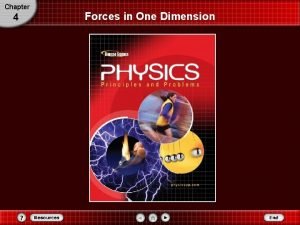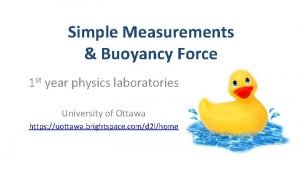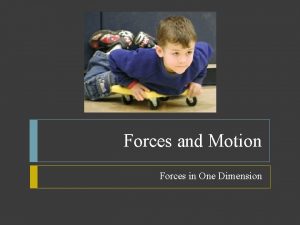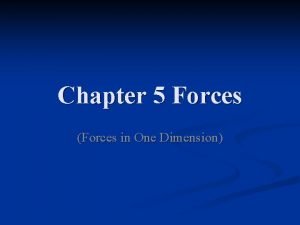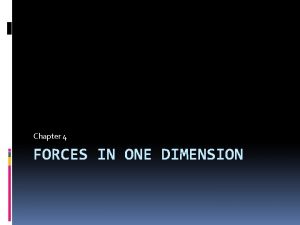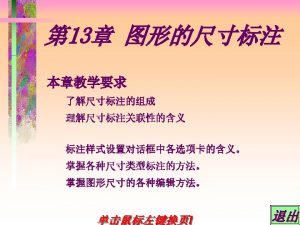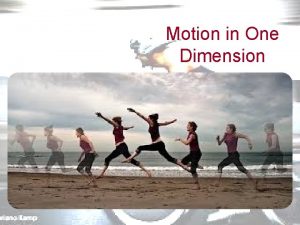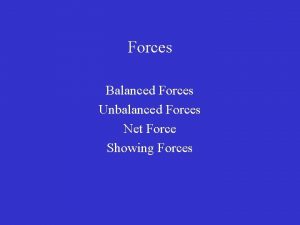Chapter 4 Forces in One Dimension I Force











- Slides: 11

Chapter 4 Forces in One Dimension

I. Force and Motion A. Force – 1. push or pull exerted on an object. Forces cause an object to: a. b. c. Speed up Slow down Change positions B. Force (F) is a vector – 1. Which results in a change in… acceleration represents size (magnitude) and direction. Force (F) – Just magnitude

System – object being manipulated External World – Everything around the system The hand & gravity are considered parts of the external world. II. Contact Forces and Field Forces A. Contact Force – An object from the external world makes contact with a system. Ex: holding a book pushing a book across a desk sitting in a chair B. Field Force – Forces that affect a system whether or not Earth is touching it. Ex: gravity magnetism

C. Agent – Cause of force applied to a system. Agent

III. Free-body Diagram A. Free-body diagram – Pictorial diagram that helps you identify all of the forces acting on a system Contact with the external world Frope on ball FEarth’s mass on the ball System

Contact with the external world System Fhand on ball FEarth’s mass on ball

IV. Force & Acceleration A. What is the relationship between Force & Acceleration? 1. Units for Force = kg · m/s 2 = Newton (N)

V. Combining Forces A. Net Force – Resulting vector of combining forces. F 1 = 5 N F 2 = 5 N Fnet = 0 N

F 2 = 10 N F 1 = 5 N Fnet = 5 N

B. Newton’s Second Law – VI. Newton’s First Law A. F = ma An object at rest will remain at rest unless some unbalanced force acts on it. An object in motion will remain in motion unless some unbalanced force acts on it. 1. Newton’s first law is sometimes called the law of inertia. a. The tendency of an object to resist change.

Assignment: Practice Problems • Pg. 89, questions 1 – 5 1. A flowerpot fall freely from a windowsill. (ignore any forces due to air resistance. ) System +y v FEarth’s mass on flowerpot a Fnet
 Forces in one dimension
Forces in one dimension Chapter 4 forces in one dimension answer key
Chapter 4 forces in one dimension answer key Vf=vo
Vf=vo Buoyant force
Buoyant force Resultant of parallel forces
Resultant of parallel forces The forces shown above are pushing/pulling forces
The forces shown above are pushing/pulling forces Intermolecular and intramolecular forces
Intermolecular and intramolecular forces Intermolecular vs intramolecular
Intermolecular vs intramolecular Intermolecular force of attraction
Intermolecular force of attraction Contact vs noncontact forces
Contact vs noncontact forces Force examples in everyday life
Force examples in everyday life Constructive forces and destructive forces
Constructive forces and destructive forces

